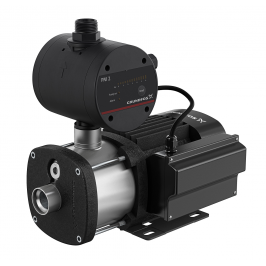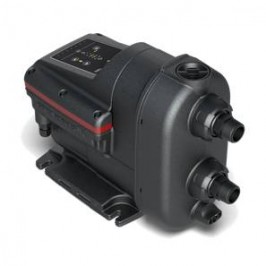Talking Pumps
Pump
Terminology – what does it all mean and what do I need to know?
Looking
for the right pump solution can sometimes be a daunting task – especially with
the array of pump terminology out and about in the marketplace. To help you
make sense of it all, we have tried to further explain what some of the most
common pump terms actually mean - and what it means to you.
Self-Priming
Non
self-priming pumps cannot handle air within their inner workings, and they must
constantly have a ‘flooded suction line’, meaning that they operate best below
the level of the water source.
Self-priming
pumps are able to handle some air within their systems by mixing it with water
that is already within their inner workings. These pumps are designed to be
able to draw water up from beneath them – and are called self-priming pumps. These pumps can be used for pumping water from
a below ground rainwater rank, or from sources of water below the level of the
pump. If you have an above ground rainwater tank, and the tank is at the same
level as the outlets, you do not need a self-priming pump but it may help with
pump priming problems caused by air leaks sometimes found in suction pipes.
Many pumps nowadays have self-priming capabilities, but can be used for
‘standard’ installations.
Variable Speed / Variable Frequency /
Constant Pressure
Fixed
or single speed pumps operate by delivering a band of pressure between a
pre-set minimum and maximum pressure. The pressure at the outlets is likely to
vary depending on the amount of water being used and the level of the water
source (as the water in a tank lowers the pressure at the taps will also drop).
Some pumps are able to deliver water at a constant
pressure by controlling the speed of the pump. That means that the pump has
a controller that automatically adjusts the pumps speed to deliver constant
water pressure to the outlets, regardless of the number of outlets open at any
one time (up to the pump’s capacity). A variable speed pump changes the speed
by the controller adjusting the Frequency (Hz) of the power supplied to the motor. This is why some call constant
pressure pumps Variable Frequency pumps.
By
using a variable speed pump that adjusts according to water demand, the energy
consumption is generally lower, resulting in lower costs. They also provide
greater comfort, in that the pressure at the tap is constant, regardless of the
demand (up to the pump’s capacity) or the inlet pressure.
Dry Run Protection / Dry Running
Protection
You
may have also seen the words dry run protection used when looking for
information on pumps. Dry run or dry running protection is when a pump
is intuitive enough to identify when the water source from which it’s running
has run out, for example when the water tank is dry. The pump will
automatically switch off upon detecting the lack of supply water, protecting
the pump from incurring any damage. Some pumps have an automatic re-start
function, which will try to re-start the pump at regular intervals to check
whether water has become available.
Anti-cycling
A
‘pump cycle’ is the start and stop of a pump. Some applications may cause a
pump to ‘cycle’ or start and stop repeatedly in a short period. This repetitive
starting can cause motor, control or pump failure and can also cause pressure
fluctuations that may lead to failure of the pipe or other fittings. Cycling will definitely cause discomfort for
the user, especially when the water is used for applications where hot and cold
water is mixed. A pump that has an anti-cycling feature will protect it
from failure when cycling is detected.
Thermal Protection
Some
pumps an also feature built in thermal
protection in the motor or control panel. Thermal protection is
incorporated into pumps to protect the motor and components from dangerous
overheating that can cause pump failure. Overheating generally occurs when the
motor is overloaded, bearings seize up or something locks the motor shaft from
turning. When this happens, excessive heat builds up in the motor. Pumps with thermal protection will automatically
trip the motor circuit to keep it from burning and damaging the motor.
AS/NZS 4020
AS/NZS 4020 is an Australian and New Zealand
standard awarded to products that comes in contact with drinking water. The
standard ensures that products do not affect the taste or appearance of water,
do not support the growth of microorganisms and do not release cytotoxic or
mutagenic compounds or metals. If your
pump is AS/NZS4020 approved you can be sure that it is not affecting the water
that passes through it, making it safe to use for pumping water that you plan
to drink.
Pump Controllers
Most
pumps available on the market these days are available with a pump controller such as a pressure
switch and pressure tank or pressure manager.
There are also constant pressure options,
which have already been explained above.
A
pump controller is used to
automatically start or stop the pump when water is required. So, instead of constantly running when you
don’t need it, it will only start when it’s required, triggered by a decrease
in pressure in the system when an outlet is opened. Some controllers have an adjustable starting
pressure, so you can nominate the pressure at which the pump should start.
A
pressure tank and switch allows for
the pump to start and stop based on system pressure. The tank provides small
volume water draw off before the pumps starts. For example, if you use a small
amount of water to wash your hands, the water is drawn from the pressure tank
without turning the pump on. When more than a small demand is required, the
water will be drawn from the tank and the pressure differential will start the
system to pump water to the outlet.
A
pump without a pump controller, pressure switch or pressure tank is called a bare pump. Bare pumps have no control mechanism, and only run when the power
is switched on to them and stop when the power is turned off.
We
are your local pump experts and an Authorised Grundfos Dealer. Grundfos pumps
are market leaders, committed to providing new and innovative products that
take comfort and simplicity to the next level, and for these reasons, we sell
and recommend the new SCALA2 domestic pump.
Speak to us today or visit us for more information.


